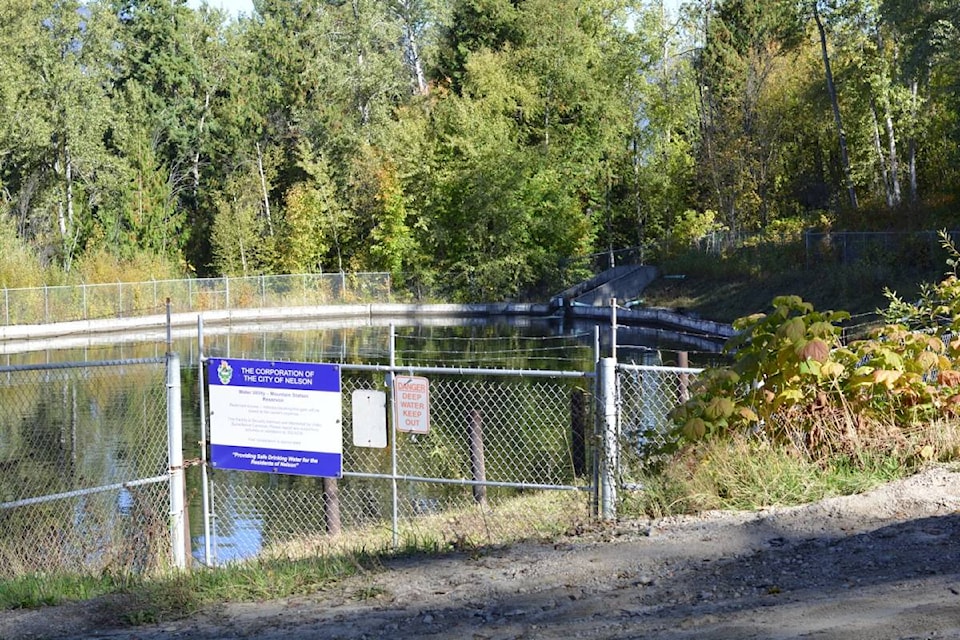Kootenay Lake tricks us.
It lulls us into the impression that we have lots of water. “Go ahead,” it seems to say, in the middle of a hot summer. “Wash the truck. Hose down the driveway. Run the sprinklers all week.”
But Kootenay Lake water would have to be treated and pumped uphill, and that’s very expensive. So, at least for the time being, it’s not available as household water for Nelson. However, the city’s Updated Water Master Plan, adopted by council on Monday, offers that possibility sometime in the future.
“We are ensuring that the work needed to have a safe and secure supply in the future is started now,” said city councillor Valerie Warmington, “to make sure we are not facing a crisis in the future. This is preventative work, it is up-front long term planning.”
The plan begins by recommending that the city make improvements to Nelson’s present source at Five Mile Creek, Nelson’s main water source located south of the city. That water is cheap because it’s gravity fed and doesn’t need pumping.
Five Mile Creek’s water doesn’t come from a glacier or a lake. It’s surface water that converges from a watershed in West Arm Park. So it is not an endless supply. It is susceptible to our wasteful habits and to forest fires and drought exacerbated by climate change. Water from Five Mile Creek is stored in the Mountain Station reservoir.
For those times in the summer when the main supply gets low, Nelson has two secondary sources, Anderson Creek (with a reservoir above Fairview) and Selous Creek (with a reservoir in Rosemont).
The 40-page water plan is attached below. Its recommendations include:
• Water from Selous and Anderson Creeks should be piped into the main reservoir at Mountain Station so that all water can be treated and distributed centrally. Currently the secondary sources don’t get ultraviolet treatment and can only be distributed to limited areas of town. This project would cost about $6.4 million and should be the first step in implementing the water plan.
Warmington said the secondary sources are the reason Nelson sometimes has boil water advisories.
“The plan is to improve treatment of secondary source water,” she said.
The report recommends using the water pressure in Selous Creek to produce micro-hydro that would operate the UV disinfection system.
• The antiquated pipeline, installed in 1925, that runs from Five Mile Creek into the Mountain Station reservoir should be replaced, moved, and its diameter enlarged to allow greater flow, at an estimated cost of $5.2 million. Again there are opportunities here to generate power.
• Construct a treated water reservoir at an old Park Street site to provide fire protection storage.
• Use Kootenay Lake as a water source to some degree. A recommended short term solution would be to use it as a secondary seasonal emergency source, with a portable water filtration system at the lake shore and supplying just the lower part of town to avoid the expense of pumping.
Warmington said there are companies that rent small filtration units that can be accessed quickly in the event of an emergency.
“We have an arrangement that we will lease from one of these companies, so we are covered in the short term if we need an emergency supply of water.”
Other more extensive and expensive options for Kootenay Lake water are noted also.
The possible use of Grohman and Clearwater Creeks, which have often come up in previous discussions of Nelson’s water future, are also discussed in the report as possibilities that would be costly and would need more research.
“Those are definitely long-term solutions,” Warmington said.
“It is on our workplan to find a source that could replace Five Mile in case of fire or anything else, and to offset any risk from climate change and drought,” Warmington said.
The report states that over the past 10 years there has been a 30 per cent reduction in summer per capita consumption in Nelson because of water line replacements and leak detection.
The plan projects Nelson’s future water use at 660 litres per day per capita in the winter and 1,000 litres in the summer. It estimates that the population of Nelson in 2060 will be 15,000.
For future populations, the report states that current water sources would not be able to meet the demand of a drought year in the winter, and would be hard pressed to do so in the summer.
The Water Master Plan Update is attached below.
Water Master Plan January 2018 by BillMetcalfe on Scribd
